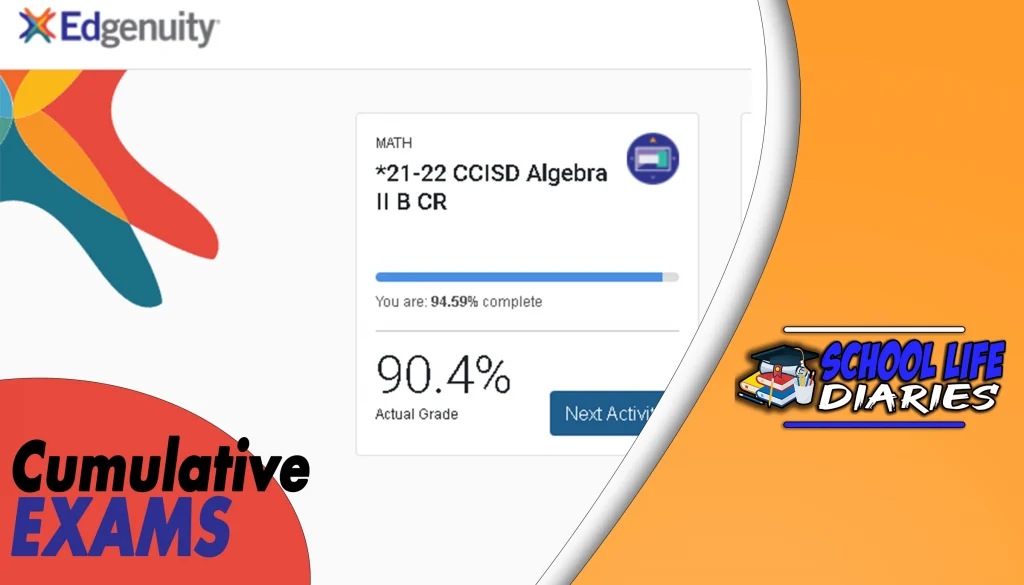Questionnaire are an essential tool in research, allowing researchers to gather valuable data from a large number of participants efficiently. They provide a structured approach to collecting information and can be used across various disciplines and research settings. Since then, they have evolved into a widely accepted method for data collection.
It is important for researchers to select the appropriate type of questionnaire based on their research objectives and target population. By understanding these aspects of questionnaires, researchers can enhance the quality and reliability of their study findings while respecting the freedom that comes with unbiased data collection methods.
Questionnaire
The design of the H2 questionnaire is crucial in ensuring that it effectively collects the desired information. Additionally, the H2 questionnaire should be designed to be user-friendly and easy to understand for participants. Once the H2 questionnaire has been administered and responses have been collected, researchers can then analyze the data. This analysis involves summarizing and organizing the responses to identify patterns or trends. Statistical techniques can also be applied to determine relationships between variables or test hypotheses.
To ensure the validity of the findings obtained from the H2 questionnaire, researchers must take steps to minimize bias and error. This includes careful question design, pilot testing, and establishing clear criteria for response coding and interpretation. Validity refers to whether a measure accurately captures what it intends to measure. In relation to the H2 questionnaire, this means ensuring that it effectively measures what it is designed to measure – whether it is attitudes, opinions, behaviors, or other variables of interest.
The H2 questionnaire is an important research tool for gathering quantitative data through specific questions presented in a structured format. Its design plays a crucial role in collecting accurate information while maintaining user-friendliness for participants. Once data has been collected through this tool, analysis techniques can reveal patterns or relationships within responses. To ensure the validity of findings from an H2 questionnaire study, researchers should implement measures like careful question design and pilot testing while keeping established criteria for response coding and interpretation in mind.
History of Questionnaire
Improvements in statistical analysis techniques enabled researchers to extract meaningful insights from questionnaire responses with greater precision. The impact of questionnaires on research methodologies cannot be overstated. By providing a standardized set of questions for respondents to answer, questionnaires ensure consistency across participants and allow for easy comparison of results. Questionnaires have also facilitated longitudinal studies by allowing researchers to collect data at multiple points in time without having to physically interact with participants. Overall, the history of questionnaires is marked by their evolution from simple tools into sophisticated instruments that have had a profound impact on social science research methodologies.
Types of Questionnaire
This discussion focuses on the types of questionnaires commonly used in research.
These include structured questionnaires, which consist of a fixed set of questions with predetermined response options.
Lastly, mixed questionnaires combine elements of both open-ended and closed-ended questions to gather comprehensive data.
1. Structured Questionnaire:
Structured questionnaires are commonly used in research to gather objective and standardized data from participants.One of the major advantages of using a structured questionnaire is that it allows for easy comparison and analysis of data. Since all participants are asked the same set of questions in the same manner, researchers can easily identify patterns and trends within the responses. This helps in drawing reliable conclusions and making valid generalizations about a particular population.
Another advantage of structured questionnaires is their efficiency in data collection. As the questions are pre-determined, it saves time for both researchers and respondents. The standardized format ensures uniformity across different respondents, simplifying the process of data entry and analysis. Additionally, structured questionnaires are often designed with close-ended questions that provide fixed response options, which further streamlines data collection.
The rigid structure may limit participants’ ability to express themselves fully or provide nuanced responses to complex issues. This can result in oversimplification or inadequate representation of certain viewpoints or experiences. While structured questionnaires offer several advantages such as standardization and efficiency in data collection, they also have limitations regarding flexibility and depth of responses. Researchers need to carefully consider these factors while choosing this type of questionnaire for their research study to ensure accurate representation and meaningful analysis of participant responses.
2. Unstructured Questionnaire:
Unstructured questionnaires offer a more flexible approach to data collection, allowing participants to freely express their thoughts and experiences without the limitations imposed by predetermined questions and response options. This type of questionnaire design is particularly useful when exploring complex or sensitive topics that may require a deeper understanding of participants’ perspectives. Without clear guidelines and predefined response options, there is a risk of obtaining inconsistent or incomplete data.
The lack of standardized questions also makes it difficult to compare responses across different participants or studies. To address these concerns, researchers must carefully design the unstructured questionnaire by providing clear instructions and prompts to guide participants’ responses. Additionally, measures should be taken to ensure the reliability of the data collected through techniques such as coding and categorizing responses for analysis. Unstructured questionnaires offer a valuable alternative to structured approaches in research as they allow participants the freedom to express themselves fully.
3. Open-ended Questionnaire:
Open-ended questionnaires provide a flexible and comprehensive approach to data collection by allowing participants to provide detailed and personalized responses, which enhances the richness and depth of the gathered information. Unlike closed-ended questions that restrict participants to choosing from predetermined options, open-ended questions allow respondents to express their thoughts in their own words. By giving participants the freedom to elaborate on their answers, researchers can gather more comprehensive data that captures the complexity of human experiences.
Since there are no predefined answer choices, respondents are prompted to reflect on their thoughts and feelings before providing an answer. This introspective process often leads to more thoughtful and considered responses, providing researchers with valuable insights into participants’ motivations, beliefs, and opinions. Open-ended questions offer flexibility as they can be tailored to specific research objectives or contexts. Researchers can design open-ended questions that elicit specific details or explore broad themes depending on the research goals.
To illustrate the use of open-ended questions in a questionnaire, consider an example related to customer feedback for a product or service: ‘Please describe your experience using our product/service.’ This question allows customers to share their thoughts without any limitations or constraints imposed by predefined response categories.
4. Close-ended Questionnaire:
This type of questionnaire often makes use of multiple-choice questions or Likert scales, allowing researchers to gather quantitative data that can be easily analyzed and compared.
The fixed response options simplify the process of gathering information as respondents only need to select from a predetermined list. This not only reduces the chances of ambiguity but also allows for efficient data entry and analysis. However, there are some disadvantages associated with close-ended questions. One limitation is that they restrict respondents’ ability to express their thoughts fully and may overlook important nuances or variations in opinions. Close-ended questions may lead participants towards specific answer choices by providing limited options, potentially biasing the results.
While open-ended questionnaires allow for more subjective and detailed responses, close-ended questionnaires have their own merits in research studies. The advantages include ease of data collection and analysis through pre-determined response options. However, they also come with limitations such as potential bias and limited participant expression. Researchers must carefully consider these factors when choosing between open- or closed-ended questionnaires based on the specific objectives of their study.
5. Mixed Questionnaire:
Mixed questionnaires are a valuable research tool that combines the advantages of both open-ended and closed-ended questions, allowing for a comprehensive understanding of participants’ perspectives while still providing structured data for analysis. Unlike close-ended questionnaires that restrict responses to predetermined options, mixed questionnaires offer a more flexible approach by including both closed and open-ended questions. This allows researchers to gather quantitative data through closed questions, such as demographic information or Likert scale ratings, while also capturing qualitative insights through open-ended questions that allow participants to express their thoughts in their own words.
Analyzing the data from mixed questionnaires can be more time-consuming compared to analyzing solely close-ended or open-ended responses. Researchers must carefully code and categorize the qualitative data obtained from open-ended questions before it can be quantitatively analyzed alongside closed responses. Additionally, ensuring participant engagement throughout the questionnaire is crucial as mixing different types of questions can increase the cognitive load for respondents. Therefore, careful consideration should be given to balancing the number and complexity of closed and open-ended questions within a mixed questionnaire to ensure ease of completion without overwhelming participants.
Mixed questionnaires offer numerous benefits in research by combining the strengths of both close- and open-ended questions. They provide researchers with structured quantitative data while also capturing qualitative insights from participants’ own words. However, careful planning is necessary to ensure an appropriate balance between closed and open-ended questions and to manage the additional workload associated with analyzing mixed questionnaire data.
6. Pictorial Questionnaire:
Pictorial questionnaires enhance the comprehensiveness of data collection by incorporating visual elements that facilitate participants’ understanding and expression of their perspectives.
This type of questionnaire utilizes images, diagrams, or other visual aids to present questions or options to respondents. By incorporating visuals, pictorial questionnaires allow for a more engaging and interactive experience for participants.
The use of images can help overcome language barriers and improve comprehension, particularly for individuals with limited literacy skills or those from different cultural backgrounds. One advantage of using pictorial questionnaires is that they can capture more nuanced responses by allowing participants to express themselves visually. Visual representations can often convey emotions, attitudes, and experiences more effectively than written or verbal responses alone.
One challenge is ensuring the consistency of interpretation among respondents when analyzing the collected data. Another drawback is the time-consuming nature of creating visual materials for each item in the questionnaire. Designing effective visuals requires careful consideration to ensure they accurately represent the intended meaning without biasing responses. Examples of pictorial questionnaires include those used in market research to assess consumers’ preferences for product packaging designs or advertising campaigns.
In healthcare research, pictorial questionnaires have been utilized to gather information about patients’ pain levels or symptoms through easy-to-understand visual scales instead of relying solely on numerical ratings or descriptions. These examples demonstrate how pictorial questionnaires can offer unique advantages in specific research contexts while also posing challenges that need careful consideration during the design and analysis processes.
Types of Questions in Questionnaire
Multiple-choice questions offer respondents a set of predetermined options to choose from, allowing for easy data analysis. Rating scale questions ask respondents to rate their level of agreement or satisfaction on a scale, providing more nuanced insights. Open-ended questions allow respondents to provide detailed and personalized responses, capturing rich qualitative data.
Other types of questions include Likert scale questions which measure attitudes or opinions on a numerical scale, and demographic questions which gather information about the characteristics of respondents such as age or gender.
1. Multiple Choice Questions:
Multiple choice questions are widely used in research to objectively gather data and eliminate subjectivity from the responses, which can evoke a sense of reliability and credibility among the audience. This structured format allows for easy analysis and comparison of responses, making it a popular choice among researchers. One advantage of using multiple-choice questions is that they provide clear and concise options for respondents to choose from. This reduces ambiguity and ensures that participants understand the question being asked.
Analyzing multiple-choice data involves examining response frequencies and patterns. Researchers can identify trends by calculating percentages or frequencies for each answer option. This helps in identifying popular choices or preferences among respondents.
Multiple choice questions offer several advantages in research as they provide an objective means of gathering data while minimizing subjectivity. The structured format allows for easy analysis and comparison, making it an efficient tool for researchers. By understanding how to properly analyze multiple-choice data, researchers can gain valuable insights into respondent preferences and behaviors.
2. Rating Scale Questions:
Rating scale questions are a valuable tool in research as they allow respondents to provide their opinions or evaluations on a given topic, enabling researchers to gain insights into the audience’s perceptions and preferences. One advantage of using rating scales is their ability to capture nuanced responses. The use of multiple response options allows for a more fine-grained understanding of participants’ attitudes or opinions. Researchers can identify patterns and trends by analyzing the distribution of responses across different categories.
Rating scales provide a standardized format for data collection, ensuring consistency in how participants respond to questions. However, there are limitations to consider when using rating scale questions. Secondly, rating scales often simplify complex constructs into single-item measures, potentially oversimplifying the phenomenon being studied. Rating scale questions offer valuable insights into participants’ perceptions and preferences through their ability to capture nuanced responses.
3. Open-Ended Questions:
Open-ended questions serve as a stark contrast to rating scale questions, which require respondents to select from a predefined set of answers. These types of questions are often used when researchers want to gather detailed and qualitative information from respondents. The benefits of using open-ended questions are numerous. This can lead to rich and insightful data that may not be captured through closed-ended questions alone.
One common approach is thematic analysis, where patterns and themes within the responses are identified and systematically analyzed. Researchers look for recurring ideas or concepts that emerge across multiple responses, allowing them to identify key insights into trends within the data set. Another technique is content analysis, which involves categorizing and coding the open-ended responses based on predetermined criteria or themes. This method allows for quantitative analysis by assigning numerical codes to different categories or themes present in the data set. By quantifying the frequency or prevalence of these categories, researchers can gain a better understanding of overall trends or patterns within their findings.
Overall, open-ended questions offer researchers an invaluable tool for capturing nuanced information and gaining deeper insights into participants’ perspectives. With careful analysis techniques such as thematic analysis or content analysis, researchers can effectively analyze these free-form responses and derive meaningful conclusions from them.
4. Likert Scale Questions:
It consists of a series of statements or questions, with response options ranging from strongly agree to strongly disagree. The Likert scale analysis involves calculating the mean score or percentage for each response option, allowing researchers to quantify participants’ attitudes and opinions. Interpreting the results of a Likert scale questionnaire involves examining the patterns and trends in participants’ responses. The validity refers to how well the scale measures what it intends to measure.
While Likert scales are convenient and easy to administer, they may not always accurately capture complex attitudes or emotions. Therefore, researchers should consider using additional methods or measures to complement the findings obtained through Likert scale questionnaires when necessary. Likert scales are commonly used in research as a means of quantifying attitudes and opinions by assigning numerical values to levels of agreement or disagreement with statements.
Interpreting the results involves analyzing patterns and trends in participants’ responses at both individual and group levels. However, researchers must be cautious about relying solely on Likert scales due to potential limitations in validity. By considering these factors during analysis and interpretation processes, researchers can ensure more accurate and comprehensive findings from their studies.
5. Demographic Questions:
Demographic information can provide a vivid snapshot of the participants’ characteristics and backgrounds. In research, demographic questions are an essential component of questionnaire design as they help in understanding the target population more comprehensively. By including these questions in a survey or questionnaire, researchers can gather valuable data that aids in interpreting the results accurately.
When designing demographic questions, it is crucial to consider the specific objectives of the study and select appropriate data collection methods. Researchers must ensure that the questions are clear and unbiased to obtain reliable information from respondents. The choice of response options should be inclusive to accommodate diverse backgrounds and cultures accurately. Researchers need to be sensitive when asking about personal details such as race or income level to maintain ethical standards.
Overall, incorporating demographic questions into a research questionnaire is vital for obtaining comprehensive insights into the participants’ characteristics and backgrounds. Proper questionnaire design and careful consideration of data collection methods are necessary for accurate demographic analysis. By gathering this information objectively and reliably, researchers can better understand how various factors influence their study’s outcomes while respecting individual privacy concerns.
6. Yes/No Questions:
Yes/No questions are a useful tool in gathering concise and straightforward information from participants, allowing researchers to quickly assess specific aspects of their study without overwhelming respondents with lengthy responses. When designing a survey, researchers have various types of survey designs at their disposal. Yes/No questions fall under the category of closed-ended questions, where participants are provided with predetermined response options to choose from. This type of question offers several benefits in research. Firstly, yes/no questions provide clear and unambiguous response options, reducing the chances of misinterpretation or confusion among participants. This ensures that the collected data is more accurate and reliable.
Yes/no questions are particularly beneficial when researchers want to measure binary constructs or variables that have only two possible outcomes. By using this type of question format, researchers can easily determine whether participants agree or disagree with a certain statement or possess a specific characteristic. Moreover, yes/no questions allow for quick analysis and comparison between different groups or subgroups within a study population.
To design effective yes/no questions, there are some best practices that researchers should follow. The wording should be simple and straightforward so that respondents can easily grasp its meaning. Researchers should consider providing an ‘I don’t know’ or ‘Not applicable’ option for cases where respondents may genuinely be uncertain about their answer or if the question does not apply to them.
Incorporating well-designed yes/no questions into surveys enhances data collection by offering simplicity and efficiency while still providing valuable insights into specific aspects of a research study. Following best practices for designing these types of questions ensures clarity and accuracy in respondents’ answers while maintaining participant engagement throughout the survey.
7. Ranking Questions:
Ranking questions are a type of questionnaire that allows respondents to prioritize or rank a list of items according to their preferences or importance. Unlike yes/no questions, ranking questions provide more nuanced insights and allow for the comparison of different options.
These questions often involve asking respondents to order a set of items based on specific criteria, such as ranking their favorite movies from 1 to 5 or prioritizing features they consider important when purchasing a new smartphone. In analyzing the responses to ranking questions, researchers employ various techniques. This provides an overall understanding of how popular or important an item is within the group being surveyed.
Respondents may face difficulty in assigning ranks when there are many options or when some items are perceived as equally important. This can lead to inconsistent rankings and affect the reliability of the data collected. Moreover, individuals might exhibit certain biases while responding, such as social desirability bias where they may rank items based on what they believe others expect them to choose rather than their true preferences. Overall, ranking questions offer researchers valuable insights into people’s preferences and priorities by allowing them to compare and analyze different options systematically.
8. Matrix Questions:
The benefits of using matrix questions in research are manifold. Firstly, they offer a more nuanced understanding of participants’ attitudes by allowing them to express their opinions on multiple factors simultaneously. This provides a richer dataset that captures the complexity of respondents’ preferences. Matrix questions enable researchers to gather more information efficiently as they eliminate the need for separate questions for each attribute being evaluated. Not only do matrix questions save time for both researchers and respondents but they also reduce survey fatigue by condensing multiple items into one clear question format.
To create effective matrix questions, consider a few tips. First and foremost is clarity – ensure that each dimension or attribute being assessed is clearly defined so that respondents understand what is being asked of them. Secondly, limit response options to those that are mutually exclusive and collectively exhaustive; this means that every possible response should fit into one category without overlap or omission.
9. Dichotomous Questions:
Dichotomous questions, characterized by binary response options, allow for a straightforward and dichotomized evaluation of participants’ preferences or opinions. By limiting the response options to two choices, researchers can easily analyze the data collected from these questions. This makes them suitable for surveys or questionnaires that aim to gather specific information quickly and efficiently.
When comparing dichotomous questions with other question types, it is important to consider their advantages and limitations. One advantage of using dichotomous questions is the ease of analysis. Since responses are limited to two options, researchers can easily calculate percentages or frequencies based on the given answers. This allows for quick data interpretation and comparison across different groups or variables. By providing only two response options, researchers may overlook nuances or variations in opinions that could be present among respondents.
Some individuals may feel constrained by the limited choices offered by dichotomous questions, leading to less accurate representations of their true beliefs. While dichotomous questions offer a straightforward approach to evaluating preferences or opinions in research studies, they also have limitations regarding capturing nuanced responses.
How to Make a Questionnaire?
To effectively construct a questionnaire, several key factors need to be considered. Questionnaire design plays a vital role in ensuring that the research objectives are met and accurate data is collected. It is important to use simple language and avoid technical jargon to ensure that all participants can comprehend the questions. Additionally, the order of the questions should flow logically, starting with general information before moving on to more specific topics.
This involves testing the questionnaire with a small sample group to identify any potential issues or areas for improvement. By piloting the questionnaire, researchers can assess how well it captures the desired information and whether any modifications are needed. After analyzing the data collected from pilot testing, researchers should validate their questionnaire by assessing its reliability and validity. Validity, on the other hand, refers to whether the questionnaire truly measures what it intends to measure. To validate a questionnaire, researchers may use statistical techniques such as test-retest reliability or factor analysis.
Constructing an effective questionnaire involves careful consideration of various factors such as design, analysis, and validation. Analyzing pilot data helps identify any shortcomings in the questionnaire’s structure or content before deploying it on a larger scale. Validating questionnaires through reliability and validity tests ensures that they accurately measure what they intend to measure.
Questionnaire Administration Modes
The design of the questionnaire plays a crucial role in selecting the most appropriate administration mode. They allow for easy distribution to a large number of participants through email or social media platforms. However, researchers must ensure that the online survey is user-friendly and accessible across different devices to maximize response rates.
If the research required detailed qualitative responses or complex questions that may require clarification, face-to-face interviews may be more suitable. This mode allows for real-time interaction with participants, allowing researchers to probe deeper into their answers and clarify any ambiguities. They provide an efficient way to collect data from geographically dispersed participants without the need for physical presence.
Choosing the right administration mode is crucial for obtaining accurate and reliable data in questionnaire-based research. The design of the questionnaire should also align with the chosen administration mode to optimize response rates and data quality. By carefully considering these factors and tailoring their approach accordingly, researchers can maximize engagement and minimize bias in their studies.
Example of Questionnaire
An illustrative example of a questionnaire can provide insight into the practical application of survey design and administration modes. The questions should be clear and concise, avoiding any ambiguity or bias that could potentially influence respondents’ answers. Each question should have response options that cover a range of possible answers, allowing participants to accurately express their opinions.
To ensure the validity and reliability of the questionnaire, various validation techniques can be employed. This may include pilot testing the questionnaire with a small group of individuals who are similar to the target population. Their feedback can help identify any confusing or ambiguous items that need modification before administering it on a larger scale. Additionally, using established scales or validated measures when appropriate can enhance the reliability and comparability of results across different studies.
By following these guidelines for example questionnaire design and employing validation techniques, researchers can maximize data quality and minimize potential biases in their surveys. An effective questionnaire not only provides reliable data but also ensures participant engagement throughout its completion process. Ultimately, utilizing well-designed questionnaires enhances research outcomes by enabling accurate data collection for analysis and interpretation purposes, leading to more informed decision-making and impactful solutions.
Applications of Questionnaire
By distributing questionnaires to a large sample size, researchers can obtain a representative sample that reflects the population under investigation. Unlike other research methods such as interviews or observations, administering questionnaires does not require direct interaction between researchers and participants. Additionally, questionnaires allow for easy data collection and analysis since responses are typically standardized and quantifiable. Researchers can easily input responses into statistical software programs for further analysis, making it easier to identify patterns or trends in the data. Furthermore, questionnaires provide researchers with an opportunity to explore sensitive topics with greater anonymity for respondents.
This increased sense of privacy allows individuals to freely express themselves without fear of judgment or social desirability bias. As a result, questionnaire responses may provide more honest and accurate information compared to other methods. The applications of questionnaires offer numerous benefits in research settings. They allow researchers to efficiently gather data from large samples while maintaining standardization across participants’ responses.
Purpose of Questionnaire
Questionnaires provide a structured approach to gathering information, ensuring consistency across participants and enabling comparisons between different groups or variables. Researchers should ensure that the questions are clear and unambiguous, avoiding any potential sources of confusion for participants. It is also important to use appropriate response options that capture the full range of possible answers without biasing the participant’s response. Additionally, researchers should consider the length of the questionnaire, keeping it concise and focused on collecting relevant information.
Overall, questionnaires serve an important purpose in research by providing a systematic way to gather data from participants. They offer numerous benefits including efficient data collection and cost-effectiveness. However, it is crucial for researchers to carefully design their questionnaires in order to maximize their effectiveness and ensure accurate data collection.
When to use Questionnaire
Now, let’s delve into the topic of when to use a questionnaire in research. Questionnaires are particularly useful when researchers aim to collect large amounts of data from a large number of participants efficiently. They allow for standardized data collection and simplify the process of analyzing responses. Additionally, questionnaires can be used across various fields and disciplines, making them versatile tools for gathering information.
There are several benefits to using questionnaires in research. First and foremost, they provide anonymity to respondents, which encourages honest and open answers. Moreover, questionnaires offer flexibility in terms of timing and location as they can be distributed electronically or on paper at the convenience of both the researcher and the participant.
To ensure an effective questionnaire design, it is essential to adhere to best practices. Firstly, clear instructions should be provided so that respondents understand how to answer each question accurately. Secondly, questions should be concise and unambiguous to minimize confusion or misinterpretation by participants. Overall, questionnaires are valuable tools for researchers due to their efficiency in collecting large amounts of data from numerous participants while maintaining anonymity and allowing flexibility in data collection methods.
Characteristics of Questionnaire
Characteristics of a well-designed questionnaire involve clear instructions, concise and unambiguous questions, and a variety of question formats to ensure accurate and insightful responses. Clear instructions are essential as they provide guidance to respondents on how to complete the questionnaire effectively. These instructions should be easy to understand and follow, allowing participants to navigate through the questionnaire seamlessly. Moreover, concise and unambiguous questions help eliminate confusion or misinterpretation in respondents’ minds, ensuring that they provide accurate answers.
When developing a questionnaire, pilot testing plays a crucial role in ensuring its effectiveness. Pilot testing involves administering the questionnaire to a small sample of individuals similar to the target population for feedback purposes. This process helps identify any flaws in the design or structure of the questionnaire before distributing it widely. Feedback from pilot testing enables researchers to make necessary modifications like rephrasing confusing questions or removing irrelevant ones. By conducting pilot testing, researchers can enhance the overall quality and validity of their questionnaires.
Response bias refers to systematic errors introduced by respondents during data collection due to factors like social desirability or personal biases. Using neutral language and avoiding leading questions can help reduce response bias by encouraging participants to provide honest responses without feeling pressured or influenced.
Characteristics of an effective questionnaire design include clear instructions, concise and unambiguous questions, along with various question formats that aid in obtaining accurate insights from respondents.
Advantage of Questionnaire
By using questionnaires, researchers can reach a wide audience and collect data from individuals who are geographically dispersed or have different schedules. Additionally, questionnaires allow for standardized responses, ensuring that all participants answer the same set of questions. This consistency simplifies the analysis process as it eliminates variations caused by interviewer bias or different probing techniques.
Another advantage of using questionnaires in research is the anonymity they provide to respondents. Participants may feel more comfortable expressing their opinions on sensitive topics or providing personal information when their identity remains undisclosed. Anonymity reduces social desirability bias, where participants may alter their responses to conform to societal norms or appear more favorable in the eyes of others. It promotes honesty and openness, allowing researchers to obtain accurate and reliable data.
Questionnaires offer cost-effectiveness as they require fewer resources compared to face-to-face interviews or experiments conducted in physical settings. Researchers can distribute questionnaires electronically via email or social media platforms without geographical limitations. This accessibility allows for a broader sample size while minimizing expenses associated with travel, recruitment, and hiring interviewers.
There are several advantages of using questionnaires in research. They enable efficient data collection from a diverse range of respondents while maintaining standardization across responses for easier analysis. Questionnaires also provide anonymity to participants, encouraging honest responses even on sensitive topics. Moreover, they offer cost-effectiveness through online distribution options that eliminate geographical barriers and reduce resource requirements for traditional face-to-face methods like interviews or experiments conducted in physical settings.
Limitations of Questionnaire
One limitation of questionnaires is the potential for response bias. This can lead to skewed data and inaccurate conclusions. Additionally, respondents may also experience recall bias, where they struggle to accurately remember past events or experiences, leading to inaccurate responses. Poorly worded or confusing questions can lead to misunderstandings and inconsistent responses from participants. It is crucial for researchers to carefully construct and test their questionnaires before distributing them widely. Pilot testing can help identify any issues with clarity or comprehension and allow for necessary revisions.
Improving questionnaire response rates is another ongoing challenge in research. Low response rates can introduce selection bias and limit the generalizability of findings. Factors such as survey length, complexity, timing, incentive structures, and mode of administration can all impact response rates. Researchers must consider these factors when designing their questionnaires in order to maximize participation rates and minimize non-response bias.
Response bias due to social desirability and recall biases can affect the accuracy of data collected through questionnaires. Furthermore, challenges in questionnaire design relating to clarity and unambiguity must be overcome through careful construction and pilot testing. Finally, improving questionnaire response rates is essential for reducing selection bias and enhancing generalizability. By addressing these limitations head-on, researchers can enhance the quality and reliability of their findings obtained through questionnaire-based research studies.
Conclusion:
They have been used for many years and have evolved to include various types and formats.
Creating a questionnaire requires careful planning and consideration of various factors such as the target population, research objectives, and desired response format. Researchers must also be mindful of when to use questionnaires as they may not be suitable for all research scenarios. Despite their advantages in terms of ease of administration and standardized responses, questionnaires also have limitations such as potential bias due to self-reporting and limited depth in gathering nuanced information.
Overall, questionnaires remain an essential tool in conducting research across various disciplines. By understanding the different types of questionnaires available and their characteristics, researchers can effectively design surveys that provide valuable insights into their research topics. While acknowledging the limitations associated with this method of data collection is crucial for ensuring accurate interpretation of results obtained from questionnaires.










